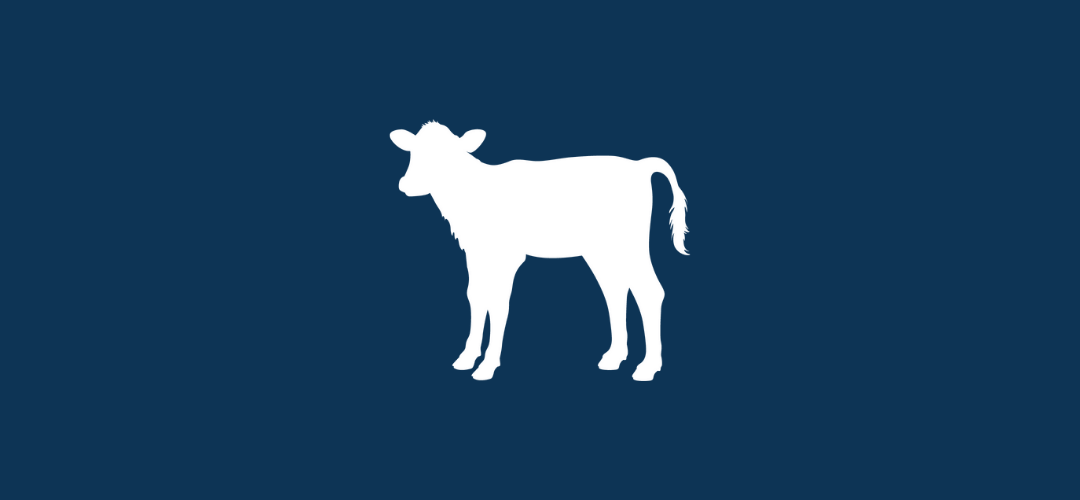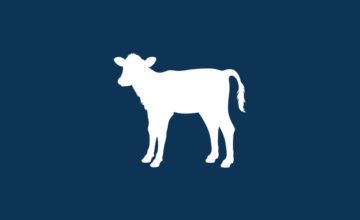Surplus Calf Care
- Aug 01, 2023
- By Grober Nutrition
- In Canada
Providing top care to both replacement heifers and the surplus calf is of utmost importance to improve profitability for the dairy farmer and veal or beef producer.
Changes to the surplus calf market
Discussions around surplus calf care have increased in recent years due to the genetic advancements of sexed semen and genomic testing. Many dairy farms are now more selective when it comes to breeding for replacement heifers, breeding their lower merit cows to beef, and using sexed semen on higher genomic cows. With this strategy, producers will get only as many heifer calves as they need, and if breeding to beef, they potentially have a more valuable bull or surplus calf. Whether breeding only to dairy bulls or a mix of dairy and beef bulls, care of the surplus calf is essential to maximizing return.
Why surplus calf care is important
Replacement heifers are the future of your dairy herd, so it’s easy to see the value in investing in their care, right from the start. The bull calves or surplus calves however, are often not given the same amount of investment due to the fact that they usually leave the dairy farm at 9-14 days of age. In a fluctuating market, a reduced economic incentive of low calf prices may lower the priority of surplus calf care on dairy farms. However, there are strategies to improve economic value and profitability of these calves to the dairy farm.
Setting surplus calves up for success
The care of surplus calves has gained traction in research studies examining strategies and interventions which can reduce morbidity and mortality rates, improving calf welfare and farm profitability. With a reported incidence of 14.9% of calves arriving to a calf rearer with signs of poor health (dehydration, navel infection, dull, diarrhea), prevention of disease starts at the maternity pen on the home dairy farm. Care at birth should not differ between replacement heifers and surplus calves. A very clearly defined strategy is of course the provision of good quality (>22% Brix) colostrum within 2-4 hours of birth, followed by subsequent feedings of colostrum and/or transition milk. Additional meals of lower quality colostrum (<20% Brix) or transition milk will provide the calf with a valuable source of fat, in combination with bioactive compounds found in colostrum which can stimulate early and healthy gut development and integrity. Both of these factors may contribute to the ease at which the surplus calf will handle transportation and comingling stressors when leaving the home dairy.
Preparing surplus calves for transportation
Transportation can be a stressful event for calves and something that surplus calves will have to go through at a very young age. In Canada, calves over nine days of age can be transported, including to auction sites, but not for longer than 12 hours in a single bout of transport without an eight-hour rest period. In Europe, regulations state that only calves over 14 days of age are allowed to be transported. Research has compared outcomes of further delaying transport to 28 days of age compared to 14 days. Calves shipped from the home farm at 28 days old had lower mortality at the calf rearers, and increased carcass weight by 14.8Kg. Interestingly, there was no mortality difference between either transport ages at the home dairy, indicating that delaying transport until calves are more robust will improve their welfare.
Whether shipping calves at 9, 14 or 28 days of age, there are a few ways to help prepare them for transport:
- Assess the health of calves to make sure they are fit to transport. If calves appear dull or are scouring, it may be best to wait until they are fully healthy to transport.
- Ensure a milk meal is fed prior to transport. In recently published research, heavier calves at arrival to the calf rearer, with higher blood cholesterol and immunoglobulin levels were less likely to be treated with an antibiotic for diarrhea or respiratory disease and had a reduced risk for mortality.
- Consider giving electrolytes prior to transport or the use of an anti-inflammatory to reduce inflammatory response developed under stress.
Further research is needed to evaluate best practices for preparing young calves for transport, managing their welfare during transport, and caring for their specific needs upon arrival at the calf rearing farm. Nevertheless, protecting the wellbeing of surplus calves requires the effort and attention of the dairy farm, drovers, and the calf rearers in a system where transportation time and comingling are two key stressors faced by these young calves. Establishing the best care for the surplus calf on farm and continuing after, represents an opportunity for all invested parties to prioritize the animal’s welfare, resulting in a robust and profitable outcome for both the dairy producer and calf raiser.







